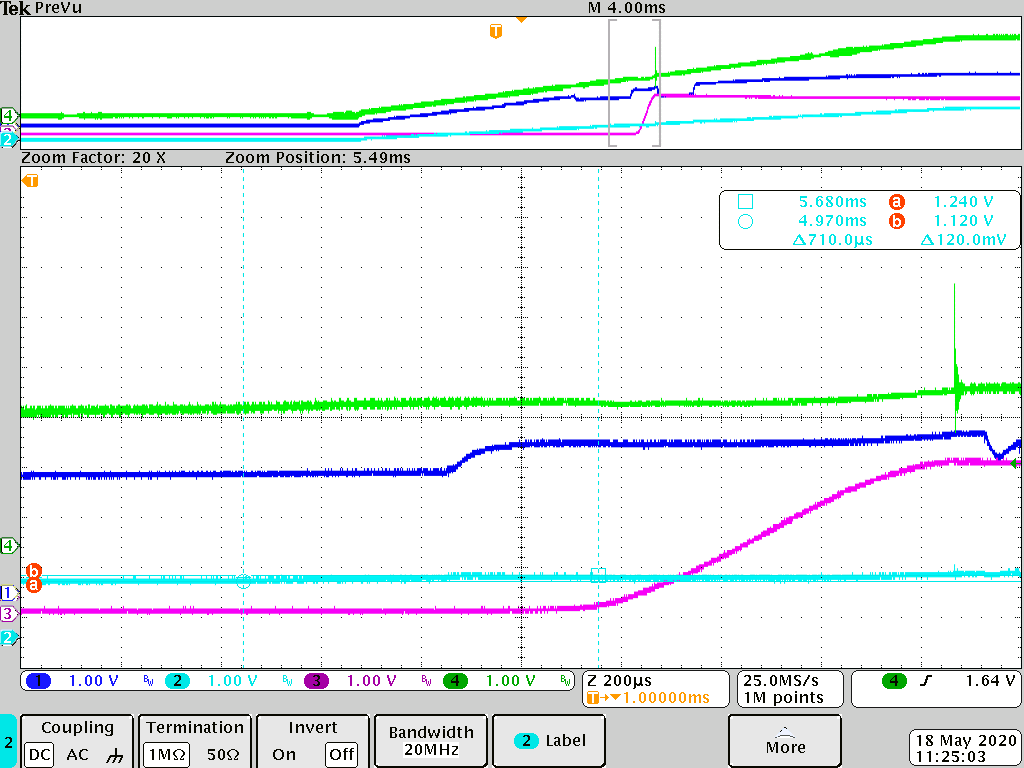Other Parts Discussed in Thread: TPS2420
We have two questions during the test of TPS2420EVM.
1. The EN pin is open and the input voltage is 2.85V. The voltage of the EN pin is 1.2V. which is different from the caculation.
2. IMAX is set to 5A,and the load current is 6A(less than 1.6*IMAX).Why the TPS2420 device immediately shuts off.



